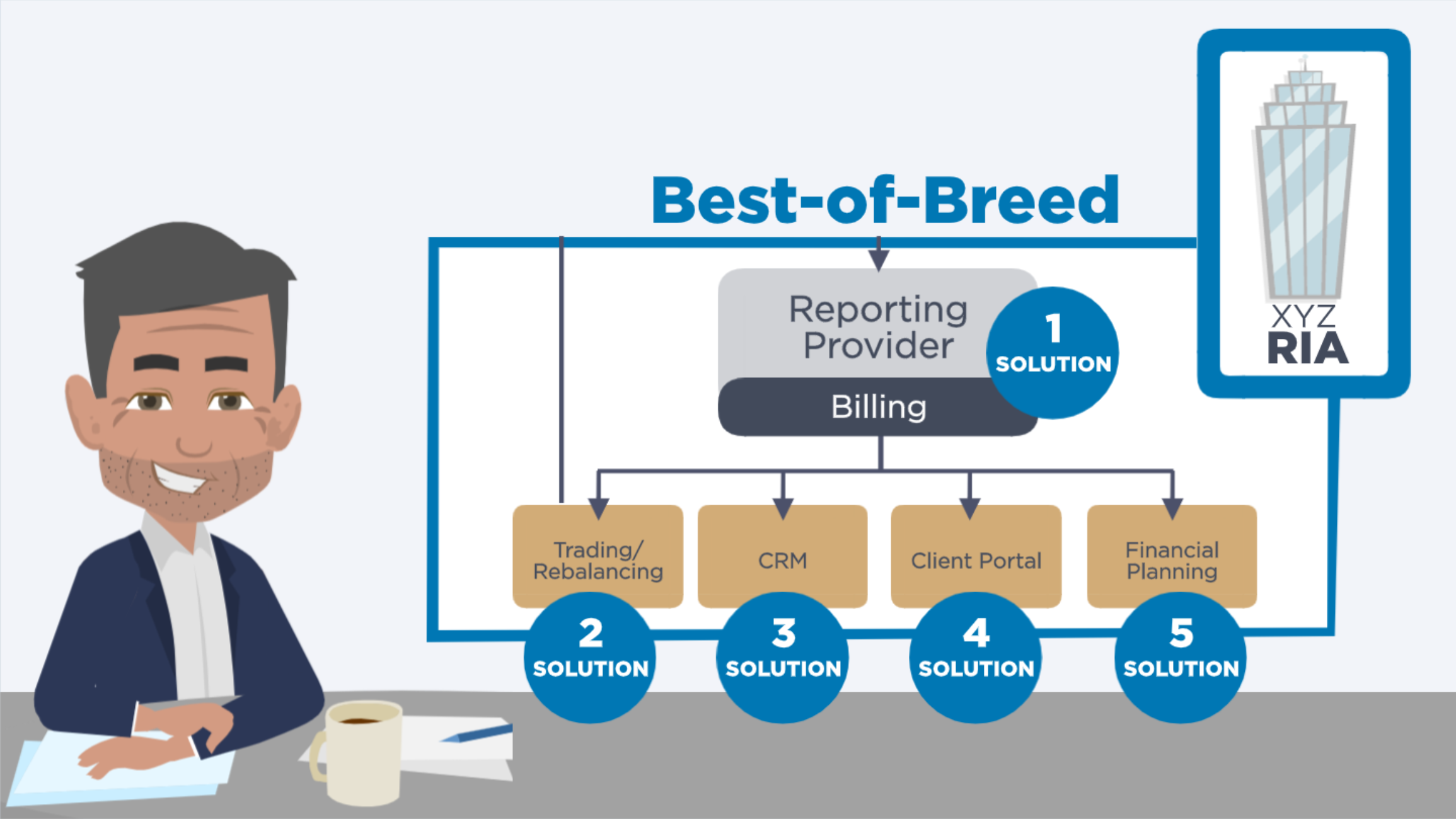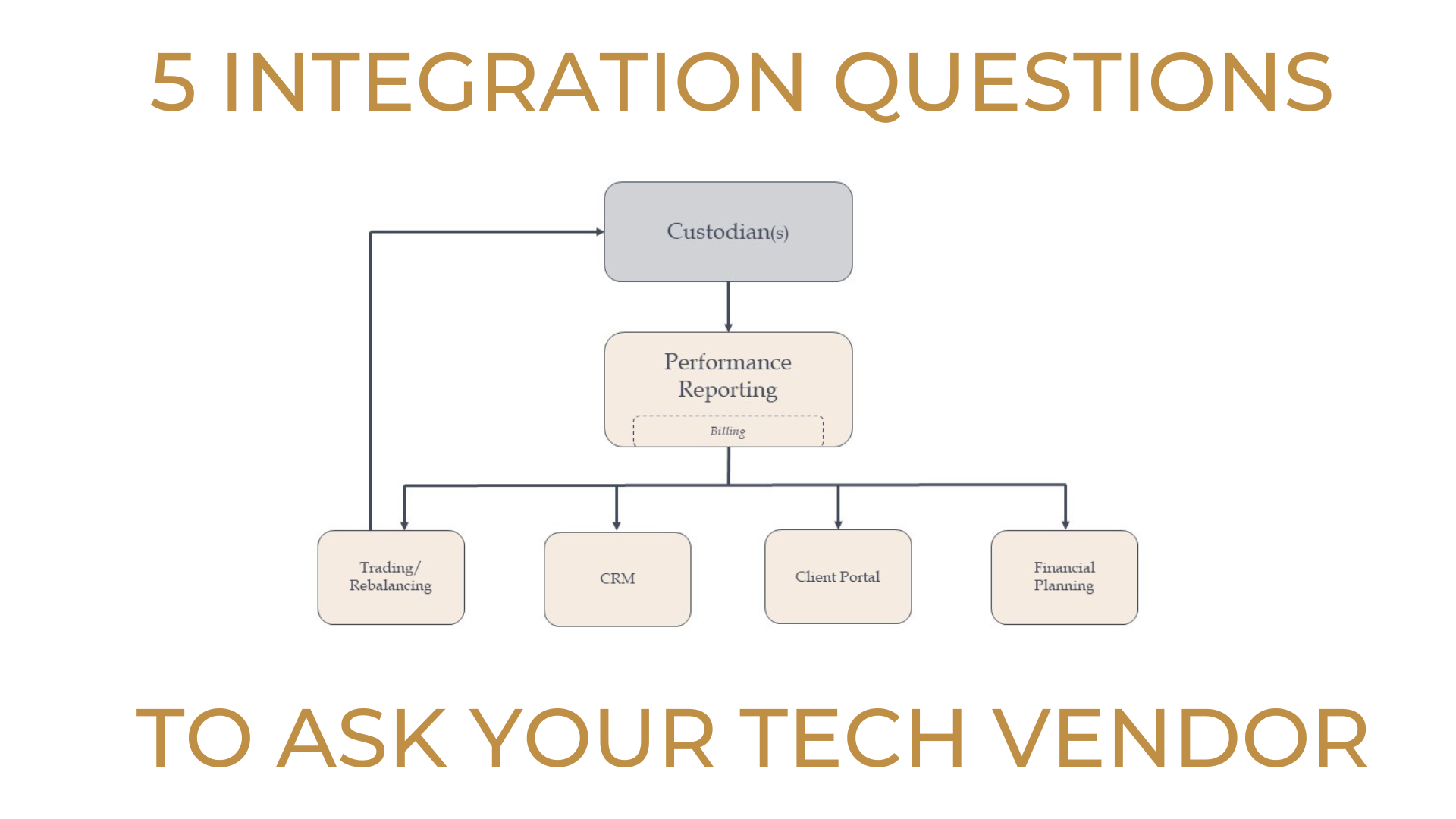“Integration” has become the key factor for RIAs as they build out their tech stack. Some firms will choose an all-in-one platform that provides all components of the technology back office under one technology solution, assuming it will provide the best integration among Reporting, Trading, CRM, etc.

Other firms will give up some of the built-in integration points offered by a single technology provider and instead choose a “best of breed” solution where they select different vendors for their reporting software, trading tool, CRM, etc.

Under this “best of breed” scenario, it is up to the RIA to determine which technology solutions will integrate with others. This can be a tricky proposition, as most technology vendors will claim integrations with other components of the RIA back office. If you ask a reporting provider, “Do you integrate with this CRM?” they most often will say, “Oh yes, our solution is integratable with that!” Or, if you ask a trading/rebalancing vendor if they integrate with a certain reporting tool, they will say, “Sure! Our solution has integration points with that!” But as we wrote in 2019, not all integrations are equal. Since publishing that article, we’ve witnessed many RIAs continue to struggle to build an integrated back office, so we wanted to provide a list of questions that will help set clear expectations across the various technology vendors as you build your firm’s tech stack.
#1 – What is your definition of ‘integration?’
This seems like a silly question, but it’s a critical one. When a vendor says that their software integrates with other components of your back office, ask them to explain in simple terms their definition of ‘integration.’ When RIAs hear ‘integration,’ they (not surprisingly) assume it means a seamless transfer of data from one system to another, but many solution providers simply mean that data can be extracted from their system and manually imported into another. You may be thinking, “Well that’s not integration at all! There’s no way that is their definition of the word!” but we’ve seen it countless times – when a vendor is pressed to define how their system integrates with another, the answer often is, “You can export data from our system to Excel and then import that data into the other system via an upload tool.” In early discussions with a technology vendor, it is always important to confirm that everyone is moving forward with the same expectations.
#2 – Does your ‘integration’ involve transfer of data, or just single sign-on?
Similar to the point above, many times when a vendor says, “We have an integration with that technology,” they are not referring to data flowing seamlessly between the two systems, they simply mean that their system allows a user to log into the other system without entering a new password. What many RIAs unfortunately discover after they’ve implemented the system is that the single sign-on is the extent of the “integration” – there is still no data transfer between the two systems beyond a manual export/import from one system to the other. In our experience, the time saved from entering a password is nothing compared to the time it takes to manually export and then import data from one system to the other. Again, it is critical to understand the vendor’s definition of integration vs. a relatively simple single sign-on feature.
#3 – Do you offer bi-directional integration?
One common integration point is between a reporting provider and CRM. For example, data can often be pushed from the reporting solution into the CRM. But you should also ask if data can flow from the CRM to the reporting system. When evaluating technology solutions to round out your tech stack, you want to be clear if the vendor’s definition of ‘integration’ includes bi-directional data flow (data flowing from both systems into one another) or just one-way integration, where data can only be pushed from system A to system B, but not the other way around, from system B to system A. It shouldn’t be a deal breaker if the data only flows in one direction, but this is something you want to be aware of early in your integration process.
#4 – Who executes the majority of the implementation – the RIA, or the vendor?
Buying software to add operational efficiencies to your firm is an important step in enhancing the scalability of the organization. Getting that software set up properly so it can add operational efficiencies to the firm can sometimes be a daunting task. Data from a previous software solution may need to be ported to the new software and scrubbed to ensure it is correct. Once the data is clean, integration points with the rest of your back office technologies must be established. Permissions for various users need to be delineated and the interface must be configured based on the preferences of each user. Training must take place and the firm must roll out the software in a measured way to maximize adoption across the organization. You will want to understand early in the conversion process how much work is involved from your team’s perspective, and how much of the implementation work can be handled by the vendor.
#5 – Do you charge an implementation fee?
The vendor may have sold you on the dream of data flowing seamlessly across all aspects of your back office once their software is implemented, but as we discussed above, getting it to that point can require a lot of blood, sweat, and tears from your already overworked staff, and the vendor may charge a hefty fee to get you to the finish line with their product. Beyond just the licensing/subscription fee for the software, you want to understand before signing the contract if you need to budget for an implementation fee as well.
This list of questions is merely meant to appropriately set expectations as early as possible with your technology vendors. A particular “yes” or “no” to any of these questions should not be reason to rip up a contract and refuse to move forward with a particular technology solution, but use these questions to fully vet the soundness of the solution being presented to you. It is important that your assumptions around the word ‘integration’ are in line with what the vendor is proposing and can in fact implement at your RIA.

